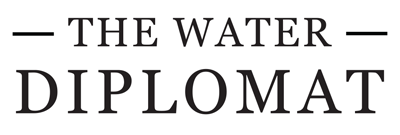Current Conflict, Historic Nuclear Blast: The Double Threats To Eastern Ukraine Water Supply
Supply To City Of Donbass Cut Off
22 Apr 2021 by The Water Diplomat
KYIV, Ukraine
More than one million people in the Donbas region of eastern Ukraine were yet again left without water in early April amid continued conflict, according to UN spokesperson Stephane Dujarric.
Water infrastructure in the region has been damaged repeatedly during the seven-year conflict, with much of the population relying on support from aid agencies for basic water and sanitation needs.
According to media reports, the damage to the pumping station has since been repaired.
It comes as Ukraine highlights a serious risk of radioactive contamination to the water supply in the region due to flooding of the mothballed Yunkom mine, where the Soviet Union set off a nuclear explosion in 1979 at a depth of 915 metres.
Intended to release toxic subterranean gases, the mission failed and the mine was “dry mothballed” i.e. sealed off, but with pumps ensuring water did not flood the cavities. However, in 2019, the Russian proxy forces occupying Donbas decided to turn off the pumps due to “prohibitive costs”, stating that scientific studies had concluded that flooding the mine did not pose an environmental risk.
However, it is understood that no independent risk assessment has been conducted and various experts have repeatedly expressed concerns.
Speaking on Ukrainian state television broadcast in the Donbas region, Dom TV, Ukraine’s minister of environment protection and natural resources, Roman Abramovsky, warned of a potential ecological catastrophe if contaminated water leaks out of the mine into other hydraulically connected mines and groundwater.
Although ongoing monitoring in the region is not currently showing any abnormalities, a more detailed investigation is necessary, said Abramovsky, adding that the occupying forces are not permitting access to the mine.
According to a local media report, Ukraine has appealed to the International Atomic Energy Agency (IAEA) to assess the situation.
A remote study conducted last year by the Conflict and Environment Observatory (CEOBS) using satellite imagery and spectral analysis found heavy metal contamination in a pond, the most likely source of which is the flooded Red October mine, which is around 4 km from the Yunkom mine and hydraulically connected to it.
The CEOBS study expresses its concern that “The flooding at Red October may indicate an increased probability of mobilising radionuclides from the nearby Yunkom mine. Whilst this probability may well remain small, given the scale of the risk, it is time for local and regional actors to come together to properly characterise this hazard with the necessary resources.”
